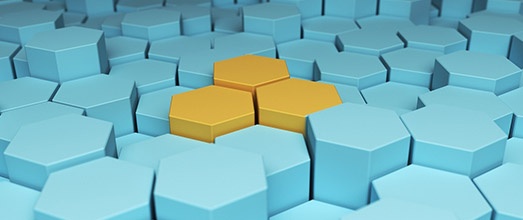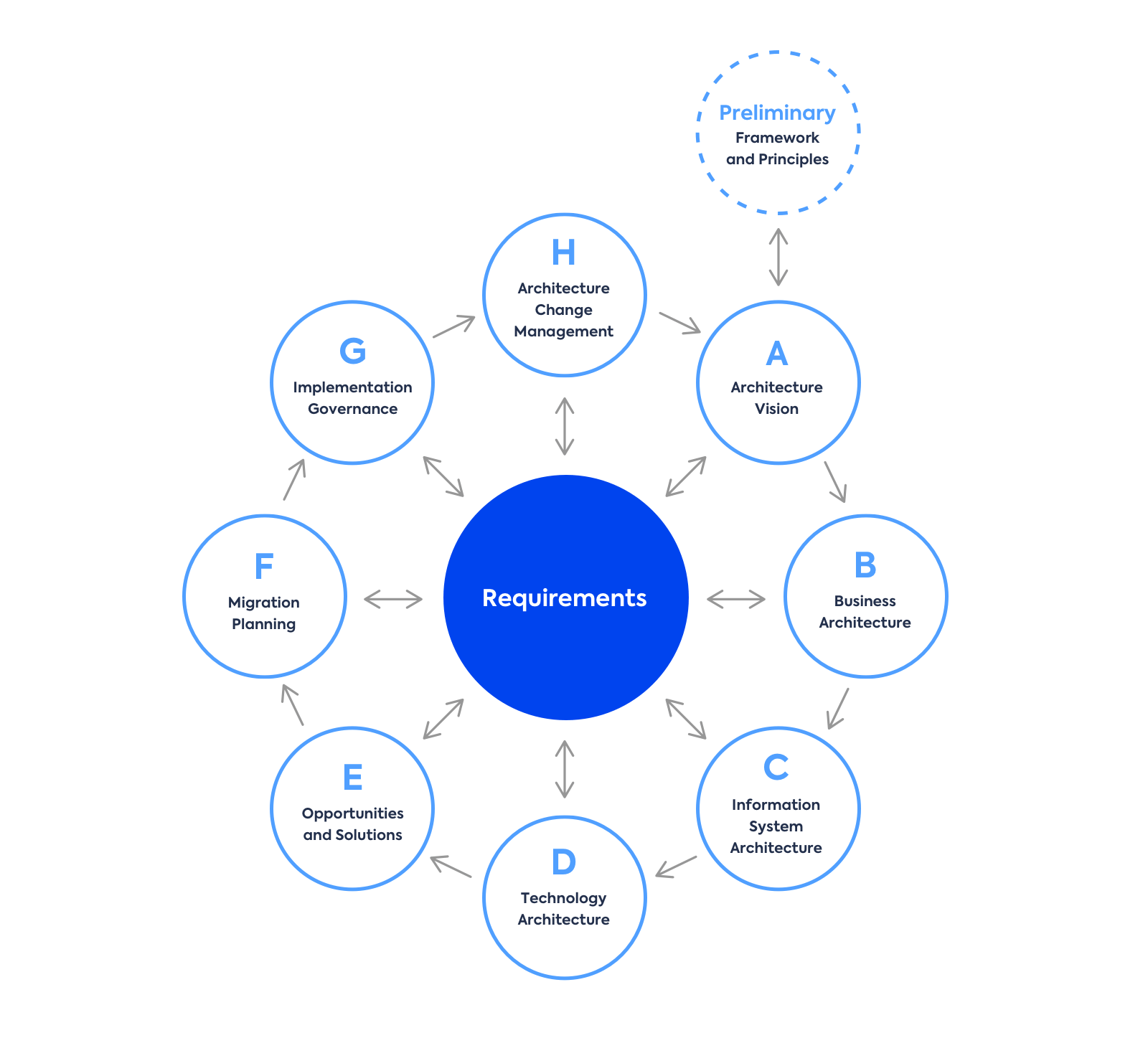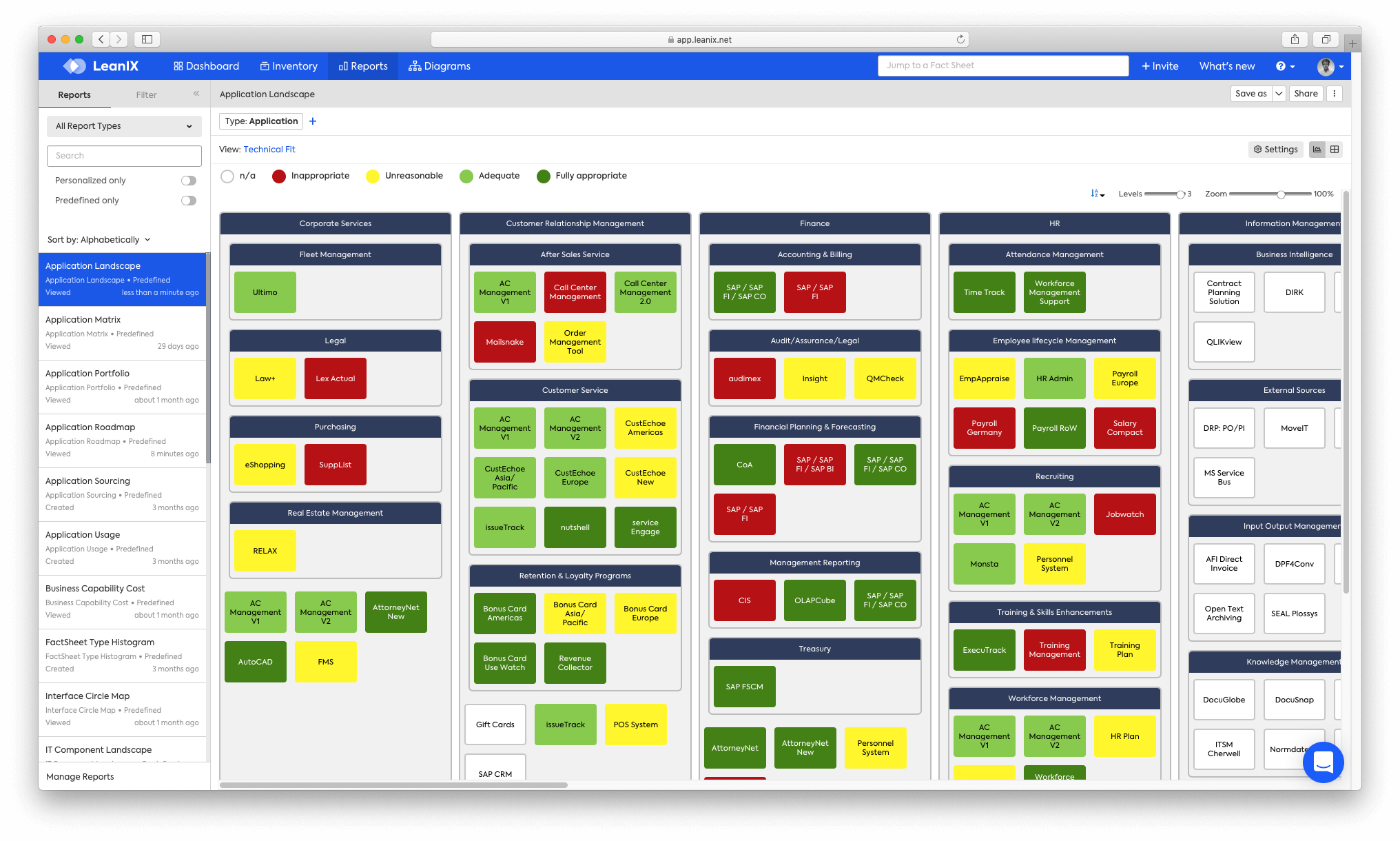
Using the TOGAF Framework for digital transformation can be challenging, due to the complexity of the methodology. We explore how you can make digital transformation under the TOGAF framework simple with LeanIX.
The Open Group Architecture Framework (TOGAF) is the standard for enterprise architects implementing digital transformation initiatives. Yet, TOGAF is complex and, by definition, a one-size-fits-all strategy.
Tailoring TOGAF to your needs, while also managing its execution, requires the right toolset. That's why our customers use the LeanIX Enterprise Architecture platform to support their TOGAF initiatives.
To find out more, see our guide:
READ: Enterprise Architecture Fundamentals: TOGAF
In the meantime, let's look more closely at what TOGAF is, its challenges, and how you can overcome them in your implementation.
What Is The TOGAF Framework?
The Open Group Architecture Framework (TOGAF) is a methodology for optimizing efficiency within an organization. It helps businesses define their goals and then align their software and IT landscape to best support those targets.
TOGAF is the methodology that underpins the field of enterprise architecture, which is becoming increasingly essential for digital transformation in the modern age. Yet, TOGAF dates back much further.
TOGAF was initially an iteration of the Technical Architecture Framework for Information Management (TAFIM) developed by the US Department of Defense in the 1980s. The TAFIM principles were applied to enterprises by the Open Group consortium to create the first version of TOGAF in 1995.
Currently on its 10th edition, as of 2022, TOGAF is based on four pillars:
1 Business Architecture
Business architecture involves understanding your business strategy and key performance indicators (KPIs). As well as creating governance, and adapting or creating procedures to support your strategy.
2 Applications Architecture
Application architecture is the process of structuring your software application portfolio to support your business goals and co-ordinate with other frameworks and processes.
3 Data Architecture
Data architecture is the organization of your business' data storage, management, and maintenance to integrate with your application architecture and support business strategy.
4 Technical Architecture
Technical or technology architecture is the discipline of aligning your organization's hardware, software, and IT infrastructure to support your application and data infrastructure.
Additions
The recent TOGAF V9.2 added two additional aspects to the Business Architecture pillar:
Business Capabilities:
These are the essential tasks and processes that your business needs to complete in order to grow. All these will need to be enabled by the right technology, applications, and data. To support you with this, we've made a free business capability template you can download.
DOWNLOAD: The Definitive Guide To Business Capabilities
Value Streams:
These are complex processes that add value to your organization's offering. This might include a product creation process or an acquisition. Supporting processes that create value is an easy goal for all your stakeholders to get behind.
Implementing The TOGAF Framework
The Open Group Architecture Framework (TOGAF) is complex and multi-faceted. To offer a framework that defines the entire business architecture of any company, it must, naturally, be comprehensive.
As such, the first stage of any TOGAF digital transformation process must be to choose which elements of the framework you will enact in your organization and how you will go about the adoption process. This is known as the Preliminary Phase.
Preliminary Phase
The goal of the Preliminary Phase is to define your own version of the TOGAF framework and what methodology you will use to implement it. This is the time to organize a workshop of all your stakeholders to get them on the same page before the project begins.
The Architecture Development Model (ADM)

From here, TOGAF offers a pre-built roadmap to TOGAF transformation called the Architecture Development Model (ADM). The ADM contains nine interdependent phases that will guide you through each part of the process:
Phase A: Architecture Vision
Once you've completed your Preliminary Phase fact-finding, you should have an idea of the scope, stakeholder concerns, and constraints. Now, you can use that information to build an Architecture Vision for the target end-state of your transformation, including processes, information flows, business capabilities, and strategy. This could be one model or several options to choose from.
Phase B: Business Architecture
Next, the Business Architecture phase essentially involves filling out that vision you developed in Phase A with more detail. Create models for all your business processes, operations, projects, production, and structure, then fit them into your vision.
Phase C: Information Systems Architecture
Your Information Systems Architecture will visualize how your data flows through your applications across your Business Architecture. Create models for data and applications separately and then connect them.
Phase D: Technology Architecture
You'll now need to consider the hardware and software you're going to need to support your Information Systems Architectures. This is known as a Technology Architecture model.
Phase E: Opportunities And Solutions
Across the first four phases, a range of Opportunities And Solutions will arise. Phase E is the time to consider improvement opportunities and resolutions to any problems you've discovered.
Phase F: Migration Planning
Now, you're ready to begin your actual Migration Planning. Consider all the steps, requirements, dependencies, and timescales that will go into your migration.
Phase G: Implementation Governance
To ensure your migration goes according to plan, you must ensure Implementation Governance is in place and adhered to. Be sure to get stakeholder engagement in the process to improve compliance.
Phase H: Architecture Change Management
Finally, it's time to use your change management skills to ensure the migration runs smoothly. Architecture Change Management is key to success.
Requirements
At every stage along the way, be certain to keep documentation of the requirements and resources you're going to need. Budgeting and early procurement of resources will keep the transformation moving and prevent any surprises.
The Challenges Of The TOGAF Framework
Above is a very brief overview of the main points of a transformation under the Open Group Architecture Framework (TOGAF). You can see that the process is far from simple.
As we explained above, offering comprehensive support requires complexity. Yet, this means that TOGAF implementation can be challenging and many have reported struggling to keep track of the whole process.
Still, others criticize TOGAF for not going far enough, as it doesn't take into account the issues of human resources and managerial change. We discussed the importance of the human element of digital transformation in a recent blog post.
READ: Application Rationalization's Hidden Dimension: People
How can enterprise architects expand the reach of the TOGAF framework while also simplifying its implementation? By leveraging the right toolset.
Leveraging The LeanIX Enterprise Architecture

The Open Group Architecture Framework (TOGAF) is expansive and complex. Following its guidance is far more achievable using a platform that enables data visualization and automation.
The LeanIX Enterprise Architecture connects to all your application programming interfaces (APIs) and populates Fact Sheets for each of your applications, and your entire IT landscape. Any missing information can be filled in by automated surveys of your colleagues.
All this information can be visualized and shared with your stakeholders in any way you need. This empowers you to involve all your stakeholders in your digital transformation, back up decisions with full data, and manage the complexity of the TOGAF framework.
To find out more about the LeanIX Enterprise Architecture, visit our product page:


